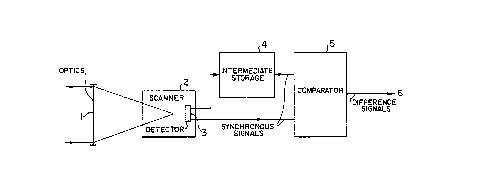Some of the information on this Web page has been provided by external sources. The Government of Canada is not responsible for the accuracy, reliability or currency of the information supplied by external sources. Users wishing to rely upon this information should consult directly with the source of the information. Content provided by external sources is not subject to official languages, privacy and accessibility requirements.
Any discrepancies in the text and image of the Claims and Abstract are due to differing posting times. Text of the Claims and Abstract are posted:
| (12) Patent: | (11) CA 1290057 |
|---|---|
| (21) Application Number: | 1290057 |
| (54) English Title: | METHOD AND APPARATUS FOR DISPLAYING MOVING OBJECTS |
| (54) French Title: | METHODE ET APPAREIL D'AFFICHAGE D'OBJETS EN MOUVEMENT |
| Status: | Expired and beyond the Period of Reversal |
| (51) International Patent Classification (IPC): |
|
|---|---|
| (72) Inventors : |
|
| (73) Owners : |
|
| (71) Applicants : | |
| (74) Agent: | MARCUS & ASSOCIATES |
| (74) Associate agent: | |
| (45) Issued: | 1991-10-01 |
| (22) Filed Date: | 1988-08-30 |
| Availability of licence: | N/A |
| Dedicated to the Public: | N/A |
| (25) Language of filing: | English |
| Patent Cooperation Treaty (PCT): | No |
|---|
| (30) Application Priority Data: | ||||||
|---|---|---|---|---|---|---|
|
ABSTRACT OF THE DISCLOSURE
A method and apparatus are provided herein for displaying
moving objects. The method includes the steps of conducting a
line scan of an object with a prismatic rotating wheel, the
prismatic rotating wheel periphery including a plurality of
adjacent, recessed, and oppositely reflecting triplet mirror
surfaces. The prismatic wheel is rotated in order that
oppositely reflecting triplet mirror surfaces alternately
deflect a first signature scan and a second signature scan of
the object with a minimum mutual time shift in first and
second directions respectively, onto a single detector. The
first signature scan is time delayed by an intermediate
storage so that it is simultaneously available with the second
signature scan. The difference between the signature scans is
determined. Finally the remaining uncancelled individual
signals in the storage are defined as coordinates of the
object, and these coordinates are presented in electronic form
as output signals for defining position coordinates of the
object. The apparatus includes means for scanning and imaging
having a prismatic rotatable wheel for deflecting a first
signature scan and a second signature scan of an object with a
minimum mutual time shift, the prismatic rotatable wheel
periphery having a plurality of adjacent, recessed, and
oppositely reflecting triplet mirror surfaces which are
adapted to reflect the first and second signature scans in
first and second directions respectively; a single detector
for receiving the first and second signature scans having a
minimum mutual time shift; means for time delaying the first
Abstract of the Disclosure (continued page 2)
signature scan by an intermediate storage so that it is
simultaneously available with the signature scan; means for
determining the difference of the signature scans; and means
for defining the remaining uncancelled individual signals in
the storage as coordinates of the object and means for
presenting these coordinates in electronic form as output
signals for defining position coordinates of the object.
Note: Claims are shown in the official language in which they were submitted.
Note: Descriptions are shown in the official language in which they were submitted.

2024-08-01:As part of the Next Generation Patents (NGP) transition, the Canadian Patents Database (CPD) now contains a more detailed Event History, which replicates the Event Log of our new back-office solution.
Please note that "Inactive:" events refers to events no longer in use in our new back-office solution.
For a clearer understanding of the status of the application/patent presented on this page, the site Disclaimer , as well as the definitions for Patent , Event History , Maintenance Fee and Payment History should be consulted.
| Description | Date |
|---|---|
| Inactive: IPC from MCD | 2006-03-11 |
| Inactive: IPC from MCD | 2006-03-11 |
| Inactive: IPC from MCD | 2006-03-11 |
| Time Limit for Reversal Expired | 1998-10-01 |
| Letter Sent | 1997-10-01 |
| Grant by Issuance | 1991-10-01 |
There is no abandonment history.
Note: Records showing the ownership history in alphabetical order.
| Current Owners on Record |
|---|
| JOSEF F. MENKE |
| Past Owners on Record |
|---|
| None |